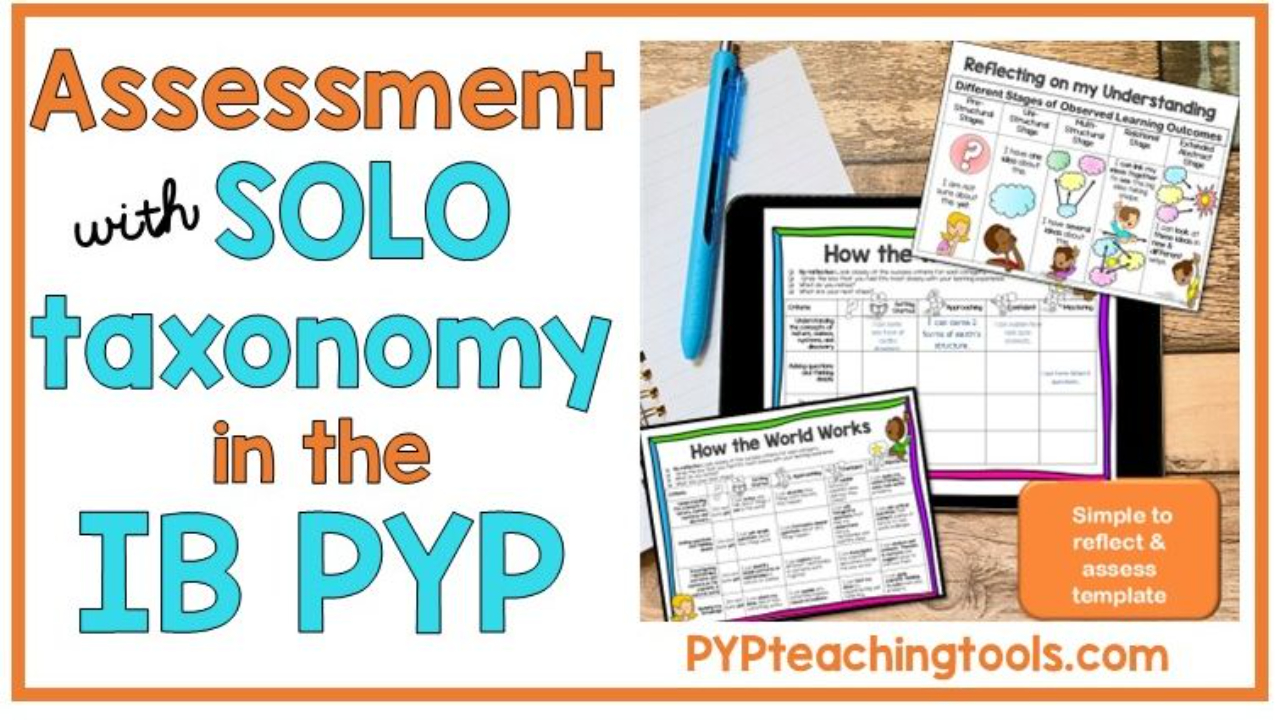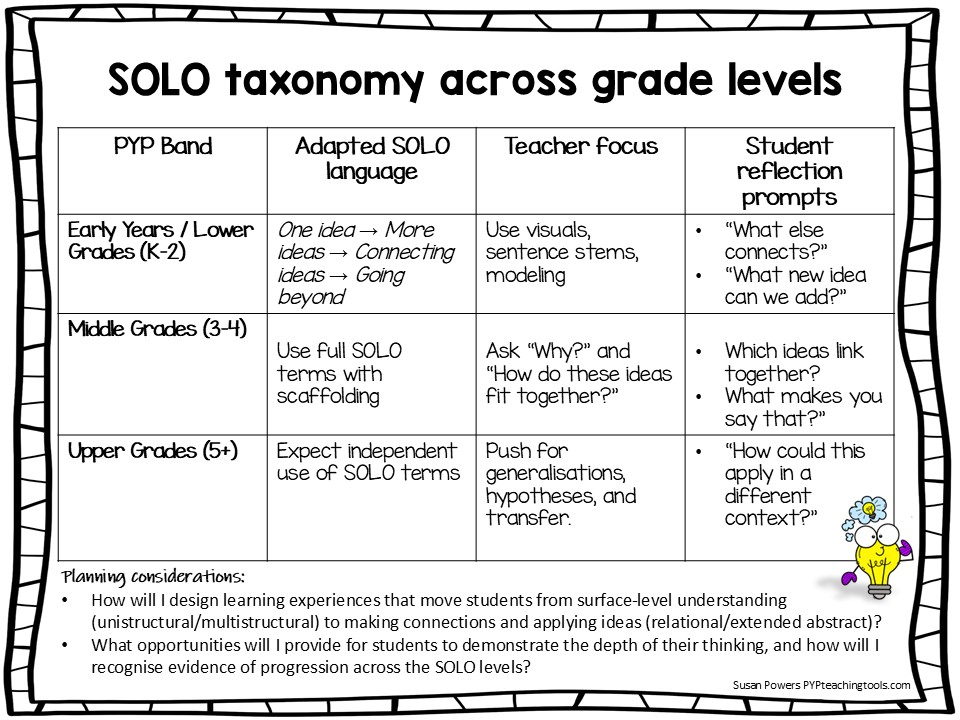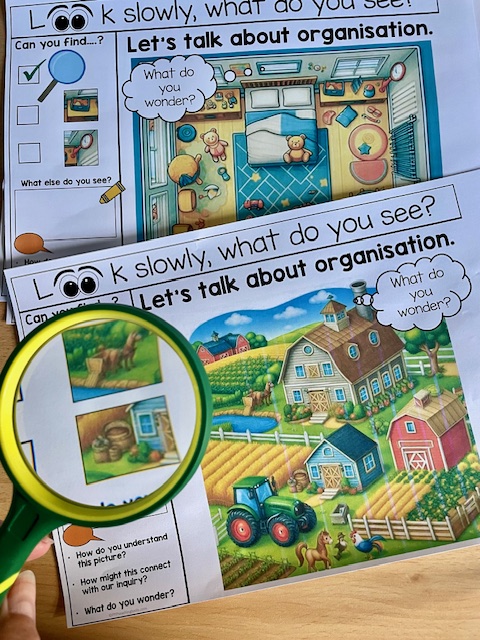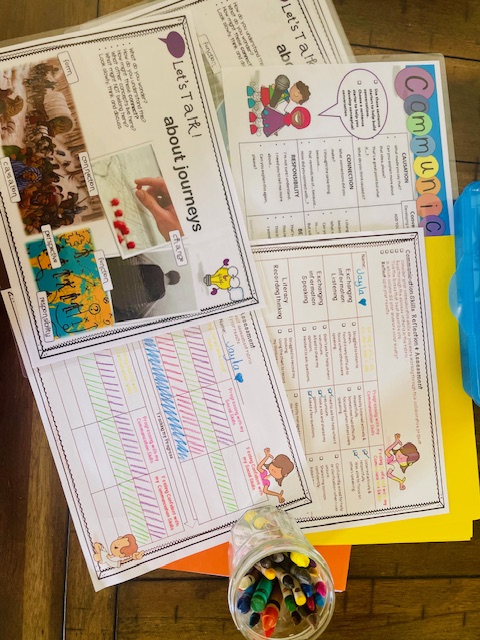Assessment & Reflection: Using SOLO Taxonomy in the IB PYP

Developing Reflective Thinkers: Using SOLO Taxonomy in the IB PYP
Why SOLO matters in a concept-based classroom
In an inquiry-driven IB PYP classroom, assessment is not just about what students know. It is about how they think, how they connect concepts, and how they grow as reflective learners. SOLO Taxonomy (Structure of Observed Learning Outcomes), created by John Biggs and Kevin Collis, provides a simple yet powerful framework to track and support this growth. Let me share how I use it in my classroom to develop and support our culture of on-going reflection.
SOLO describes levels of understanding:
-
Prestructural – The student is missing the point
-
Unistructural – One relevant idea is identified
-
Multi-structural – Several relevant ideas are collected but remain unconnected
-
Relational – Ideas are linked into a meaningful whole
-
Extended Abstract – The learner transfers and applies understanding in new ways
In many ways, SOLO mirrors the learner’s journey through inquiry: from gathering facts, to connecting ideas, to applying concepts in fresh contexts. This makes it a natural companion for concept-based learning in the PYP.

How SOLO supports the PYP
-
Deepens conceptual learning: SOLO levels reveal the depth of thinking, not just content recall.
-
Guides formative assessment: Teachers can give targeted feedback such as, “You’re listing many ideas (multi-structural). How can you show how they connect?”
-
Encourages reflection: Students learn to self-identify their current level and plan what’s next.
-
Creates consistency: The same SOLO language can be used across all grade levels, providing a common framework for growth.
-
Strengthens communication: Explaining how ideas connect or transfer requires precise, thoughtful language.

Planning for SOLO Assessment:
Using the SOLO Taxonomy in planning and assessment helps us to intentionally design learning experiences that move students from surface understanding to deep conceptual thinking. By adapting the language and expectations for each grade level, we can scaffold learning from simple idea generation in early years to independent application and generalisation in upper grades. We can use visuals, questioning, and modeling to prompt reflection such as “What else connects?” or “How could this apply in a different context?” This structured approach allows us to assess depth of understanding, support progression across the SOLO levels, and cultivate students’ ability to think critically and independently.

3 Practical Ideas for Lower Grades (K–2)
-
Concept Ladder
Place a central concept card (e.g. change) on the table. Provide picture cards showing examples (melting ice, butterfly life cycle, plant growth). Students identify one (unistructural), collect many (multi-structural), explain connections (relational), and suggest a new idea (extended abstract). -
I created these Look & Wonder story mats to encourage our younger learners to chat about what they notice, using images connected with the concepts within our themes. The children are making connections to support conceptual understanding.

-
Exit Ticket Spinner
Use a simple SOLO-aligned spinner. Prompts include: Name one idea you learned (unistructural), List more than one (multistructural), How are they connected? (relational), What new question do you have? (extended abstract). -
Think–Pair–Share SOLO
Pose a question: What causes things to change?-
Think: each child shares one idea (unistructural)
-
Pair: combine ideas into a list (multi structural)
-
Share: explain how ideas link (relational) and suggest a new generalization (extended abstract).
-
3 Practical Ideas for Upper Grades (3–5)
-
Tiered Question Framework
Design inquiry questions at each SOLO level. Example for systems:-
Unistructural: Identify one part of the system.
-
Multi structural: List several parts.
-
Relational: Explain how the parts work together.
-
Extended Abstract: How could this system be applied or redesigned in another context?
-
-
Self-Assessment Growth Charts
After projects, students place themselves on a SOLO continuum. They then set a goal: What would move me from multi structural to relational? Equally effective is creating a graph or chart to record progress as you work through the programme of inquiry.
Jigsaw With SOLO Reflection
Students become experts on different aspects of a concept. In groups, they share knowledge, link perspectives (relational), and generate new generalisations (extended abstract). I created these Concept Discussion mats for exactly this, literally supporting communication skills with concept-based discussions as the children make connections to the collection of images that are classified by the related concepts. My students are mastering the art of communication, critical thinking and collaboration as they are tuning into their inquiry through these concept mats. Win-win!
Resource Spotlight: SOLO Reflection Spinners
One practical and UNIQUE tool to bring SOLO alive is the Assessment & Reflection Spinners. These spinners were such a huge success with supporting reflection and assessment of the concepts within our themes that I created them for the ATL skills and the Learner Profile too. There's a set for Lower grades and also Grades 3–5. Highly engaging, each spinner provides SOLO-aligned prompts that encourage your students to reflect, self-assess, and communicate their thinking.
-
Individual use: Students spin to choose a reflection prompt at the end of a lesson.
-
Peer use: Partners spin and ask each other SOLO-based questions.
-
Whole-class use: Teachers spin to spark reflective discussion and see where students are in their conceptual journey.
👉 Explore the resource here:
SOLO Taxonomy Assessment & Reflection Spinners (Grades 3–5)
SOLO Taxonomy Assessment Rubrics (Grades 3-5)
SOLO Taxonomy Assessment & Reflection Spinners ( Grades K-2)
SOLO for Reflective Thinkers and Communicators
-
Reflective: Students learn to track their own thinking, identify gaps, and plan next steps.
-
Communicators: Explaining relational and extended ideas requires articulation, justification, and peer dialogue.
By embedding SOLO in reflection routines, we create classrooms where students not only learn what to think about but also how to think more deeply — and how to talk about that growth.
Final Thoughts
SOLO Taxonomy gives us a common language for learning progression across all PYP grades. Whether through ladders, spinners, or simple reflection prompts, it supports students in moving from surface ideas to deeper, transferable understandings.
As PYP teachers, our role is to design opportunities for learners to climb the ladder of thinking — and to empower them to recognize their own progress as reflective communicators.
Enjoy!

P.S. If you'd like to receive an £8.00 All Access Pass to purchase any PYP Teaching Tools you choose, you may be interested in my monthly Essentials for Inquiry membership. Check out the package deal here.


